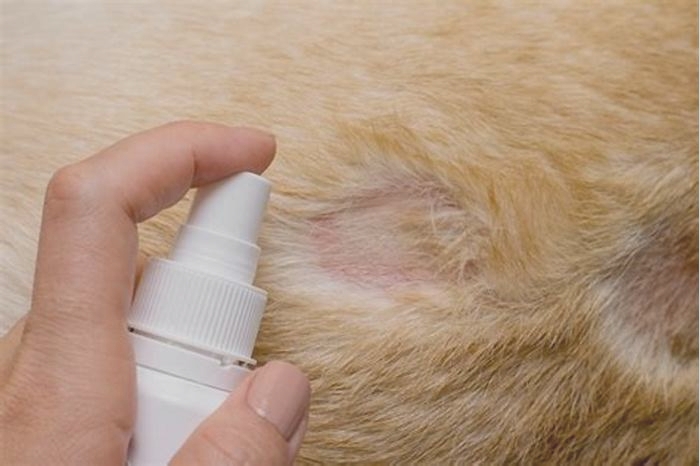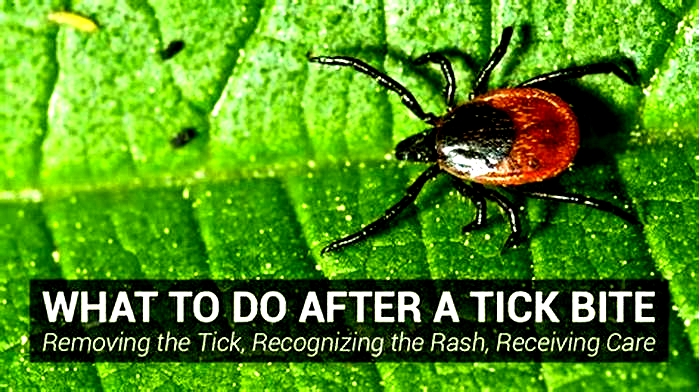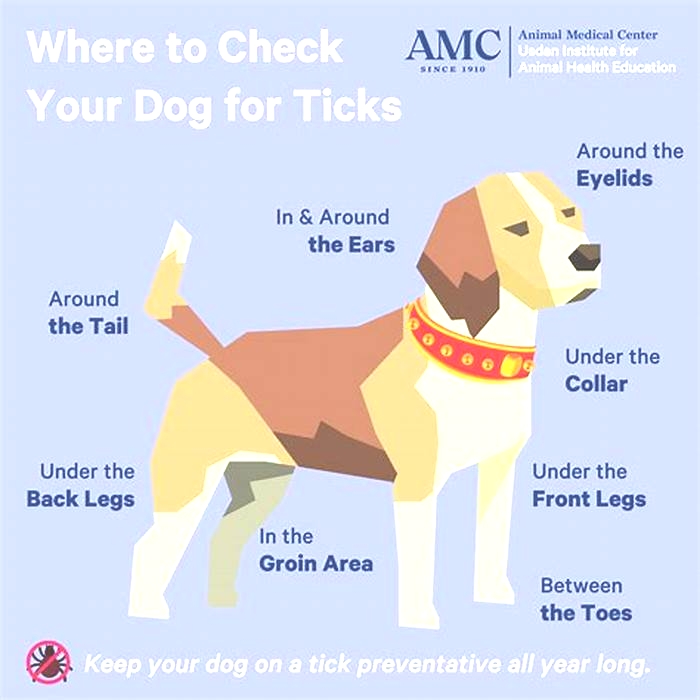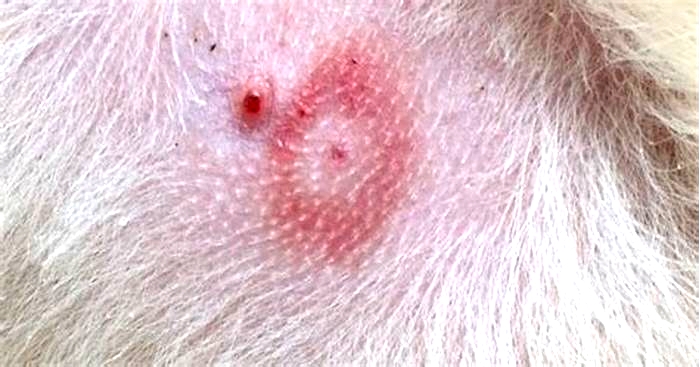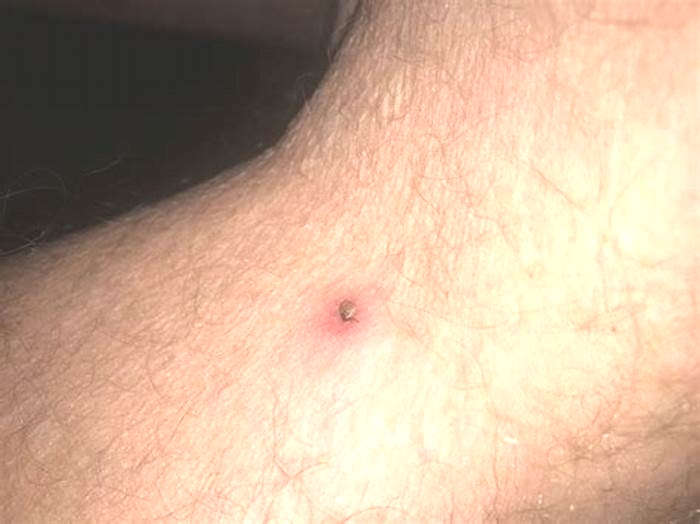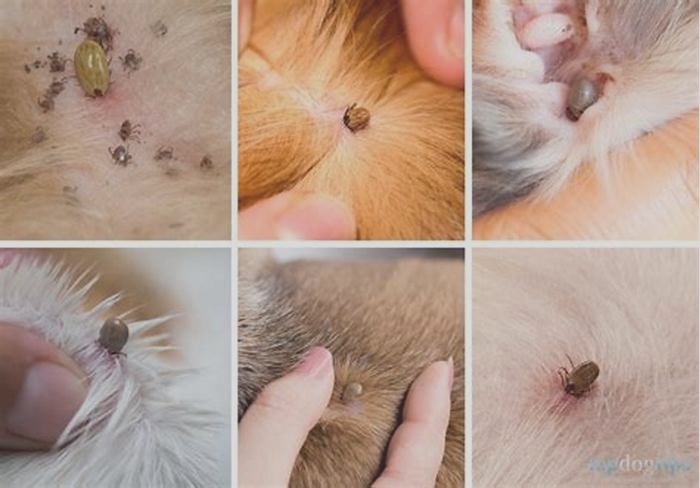How do you know if its a tick or flea
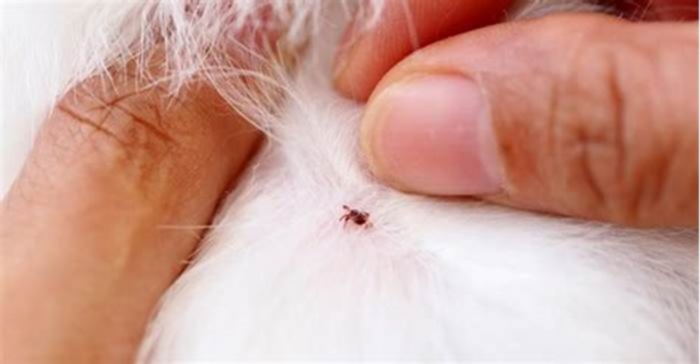
Looking for signs your dog has ticks? These telltale symptoms mean you have a flea or tick problem

Fleas and ticks are common issues with dogs, but they arent harmless. These pests attach themselves to a dogs body, feed off their blood, and make them extremely uncomfortable, if not ill. It can be a miserable experience for both you and your pet. Left undetected, fleas and ticks can transmit a host of unsavory diseases. You need to keep a close eye out for the signs your dog has ticks.
So, where does a dog pick up these nasty critters, anyway? And if they do, how will you know? Weve got the answers plus a few tricks on how to prevent them (and why this matters). These are the sign your dog has ticks or fleas.
Whats the difference between a flea and a tick, anyway?
Both bugs are parasites; however, there are distinct differences between them.
Fleas are small wingless insects that are almost invisible to the human eye. They have six legs and antennae, and they prefer to spend their entire life span (about three months) on one host. Adult female fleas lay as many as 20 to 40 eggs on their chosen victim each day, so they multiply quickly, especially in the warm-weather months.
Because fleas jump on and off their host after feeding, your dog can pick them up almost anywhere your yard, the dog park, your groomer, or even from friends and family who visit.
Ticks, on the other hand, are arachnids (think spider family) and feed by digging their entire head into the skin. They have eight legs and no antennae, and they are large enough to be seen with the human eye. Ticks spend a week or so on each host and live as long as three years. Since they cant jump, they must wait for another unsuspecting snack to come by so they can crawl on board.
Unlike fleas, ticks dont mind cold weather, which basically means your dog can pick them up almost any time of year. Ticks like to hang out in the woods and high grass or on shrubs, just waiting for a new host to brush up against them.
Signs your dog has ticks or fleas
Because fleas are small and jump around a lot, and ticks burrow into your dogs fur, its often hard to see them if you dont know what to look for. Here are five telltale signs your dog is unwittingly hosting one or more of these parasites:
- Your dog is scratching, biting, or chewing his skin. Fleas bite. When they do, the protein in their saliva creates an allergic reaction that makes your dog itch.
- Your dog is losing hair, especially around the neck and tail. These are common places for fleas to hide. As your dog scratches to relieve the itch, it can cause hair loss.
- You see tiny red bumps on your dogs skin. Because fleas jump off their hosts after feeding, its often difficult to see them. Their bites, however, can irritate your dogs skin, causing discomfort and dermatitis.
- You find small black specks on your dogs skin or bedding. This is flea dirt, a mix of blood meal and flea feces.
- Your dog develops a fever, becomes lethargic, or loses his appetite. Ticks carry ugly diseases like Lyme and Rocky Mountain spotted fever. Fleas can cause anemia and transmit tapeworms.
Are fleas and ticks on your dog dangerous?
Neither of these parasites is desirable, but in comparison, ticks are far more dangerous than fleas.
Fleas can spread tapeworms and anemia. Additionally, the saliva they leave behind from biting your dog can cause dermatitis. If you suspect your dog has fleas, consult your veterinarian. Because these parasites reproduce so quickly, you can have an infestation in your home in no time. Your veterinarian can recommend treatment for your dogas well as ways to rid your entire house of the fleas and the eggs they lay.
Ticks spread Lyme disease and Rocky Mountain spotted fever, just to name a couple of dangerous diseases. Thats why its important to check your dog regularly for ticks, especially if he spends time in heavily wooded or grassy areas.
What happens if you dont remove a tick from a dog?
The good news is that it can take up to
48 hoursfor your dog to catch the bacteria that causes Lyme disease, which means frequent tick checks will ward off many of the more dangerous side effects. Left undisturbed, the passenger will stick to your pups fur for a few days and then drop off.
Alternatively, you might discover a dead tick, which means your preventative worked at killing the parasite but not at keeping it away. If you do find that your dog has had a tick, especially if you think it was there a day or more, you should reach out to your vet about follow-up testing, usually blood work to look for Lyme. Does your dog get more than a few ticks per year? If you live in a rural area or somewhere where ticks are a common hazard, consider the
canine Lyme vaccine.
Top tips to prevent fleas and ticks on your dog
While theres no foolproof method to keep your dog from getting fleas and ticks, you can minimize the risk:
- Keep your lawn manicured. Fleas and ticks like to live in tall grasses, on shrubs, and in woodpiles. Both like moist and humid conditions.
- Check your dog regularly for signs of parasite activity. Contact your veterinarian immediately if you suspect your dog has contracted an illness as a result.
- Put your dog on a year-round flea-and-tick prevention program as recommended by your veterinarian.
- Schedule regular checkups. Not only can your veterinarian monitor the effectiveness of your dogs prevention program, but she also can examine him for any signs of illness that might not be obvious.
We should also mention that fleas and ticks are equal-opportunity parasites, meaning theyll bite just about any mammal, humans included. Fortunately, flea infestations can be eradicated and ticks can be removed fairly easily. Diligence and observation are key. As long as you take the proper precautions and check your pet regularly for signs and symptoms, you can keep all members of your family protected from the discomfort and illnesses these parasites cause.
Editors' Recommendations
What Are Signs of Fleas in Your Bed?
If you sleep with your cat or dog and they have fleas, you may be more likely to get bitten in bed. Those bites may include hives, swelling, rashes and itching.
Cozying up to a dog or cat in bed can be soothing, unless your furry friend has fleas. Fleas bite people as well as pets and if your pet typically shares your bed, they may bring fleas with them.
Many pet owners sleep with companion animals. One
While fleas are typically harmless to humans, flea bites do itch. They can also make your pet very sick.
If youre wondering why you and your pet cant stop scratching, read on to learn about the signs of fleas in bed and what you can do to get rid of fleas forever.
Thousands of flea species exist. The most common types in the United States are dog fleas (Ctenocephalides canis) and cat fleas (Ctenocephalides felis). Either kind will bite dogs, cats, rabbits, and other furry mammals. If they have access, they may also bite birds.
Fleas bite people, too, though they wont stay on you for long. Fleas prefer to nestle in fur or feathers, rather than skin or hair.
Fleas like to live on a blood host. They wont take up residence in your bed, but they will leave evidence that theyve been there.
If your pet has fleas, the eggs may roll off their fur and onto your bed, where theyll hatch. Adult fleas can jump long distances and may make their way onto bedding.
Signs of fleas in your bed include:
Bites
If you notice itchy red dots along your shins, ankles, and feet, you may have a flea infestation.
Multiple flea bites often appear as a straight line on your lower limbs. In some instances, flea bites may have a red halo surrounding their center.
Unlike bed bugs which typically bite people on the face, arms, and neck fleas tend to nibble on your lower body parts. They may bite behind your knees, where skin is warm and moist.
If your pet likes to sleep near your head, you may see bites in your elbow bends and on your upper body as well. Red dots on your face or chest may also be a sign of fleas.
You may have additional side effects if youre allergic to fleas or have a strong reaction to the bites. Symptoms include:
- hives
- swelling
- rash
- intense, extreme itching
- signs of anaphylaxis, including shortness of breath

Residue (flea dirt)
All insects poop, including fleas. Flea dirt, or residue, looks like tiny black dots. If your pet has fleas and sleeps with you, youll likely see or feel flea dirt on your sheets.
Flea dirt is primarily made up of the hosts blood. Fleas with a host nearby consume much more blood than they need to survive daily. Fleas often excrete while biting and may release 10 or more drops of flea dirt while they feed.
Pet scratching
It can be hard to see flea bites on your pet, so you may want to pay attention to whether your pet is scratching. Your pet may also appear to gnaw or bite their own skin.
Fleas can infest an animals entire body. This causes widespread itching and discomfort. If left untreated, your pet may develop skin infections or a rash from constantly breaking their skin while scratching.
Even if your pet is housebound and never goes outside, they can still get fleas. Fleas can travel into homes on the soles of shoes or on clothing. If your pet is scratching, they may have a flea infestation.
Fleas dont live long lives, but they do go through several stages of development:
- Eggs. Female fleas lay up to eight eggs after each feeding. The oval-shaped eggs are loose and can roll around. They may land on any surface, including your bed. They can remain there until they hatch, 1 to 12 days later. Flea eggs are clear to white in color and resemble dandruff flakes or salt.
- Larvae. Flea eggs grow into larvae. Flea larvae look like small, translucent worms or maggots. You may be able to see black matter inside their bodies, especially under a microscope. This stage lasts for about a week.
- Pupae. Flea larvae grow a cocoon to become incubating pupae. Their cocoons are sticky, so dust can get caught on them. Flea pupae look a lot like flea dirt. Pupae can remain alive and ready to hatch for up to 1 year under warm, humid conditions.
- Adult fleas. Fleas are tiny, but theyre not microscopic. If your home is infested, you may see them in carpets or bedding. Fleas are wingless. They range from light reddish-brown to black in color. Their bodies are tough and can be hard to squish. Fleas move very quickly and can jump as high as 13 inches. You may see them moving around on your pets skin but probably wont see them nestling on top of fur. They are easiest to see on your pets belly.
Fleas need blood to survive. In the presence of a host, a flea can live up to 1 year. Without a host, they can survive for only 1 or 2 weeks.
If your home is warm and humid, they may live longer than they would under dry or cold conditions. Thats why spring and summer are flea seasons.
Fleas like to burrow into carpeting and bedding, but they wont live there for long if they dont have a host to feed from. Fleas are more likely to live on your pets body than on your sheets or blankets.
If you have fleas, daily vacuuming of all soft surfaces can help to remove them. This includes carpets and upholstered furniture, such as couches and chairs.
You can sprinkle flea powder onto carpets and rugs and vacuum it up later. Sprays are also available for treatment around the house.
Throw out the vacuum bag each time you vacuum. The suction action of vacuuming may kill many fleas in all stages of their lives, but it probably wont kill all of them. Fleas can continue to live and lay eggs in vacuum cleaner bags for 1 to 2 weeks.
Wash your sheets and blankets and your pets bedding every few days in hot water. If you have curtains, you should launder them often, especially if they touch the floor.
The most common way fleas get into homes is on the bodies of pets. Talk with a veterinarian about the best type of flea prevention products for your furry or feathered friend.
Some products kill existing fleas, eggs, larvae, and pupae, plus prevent future infestation. You can also get dual-prevention products that protect your pet from ticks as well as fleas. These may be especially beneficial if live in or often visit grassy or wooded areas.
When using flea prevention products, make sure you stick to a schedule. Some require monthly reapplication.
Even while using these products regularly, check your pet often for fleas. This may be easiest to do during bathing, when you can see their skin clearly.
Long-haired animals should also get groomed often, especially during hot weather. This will make them more comfortable, plus make spotting fleas and flea dirt easier.
Fleas bite people as well as pets. If you sleep with your cat or dog and they have fleas, you may be more likely to get bitten in bed.
You can eliminate flea infestations by using flea prevention products on your pet. Cleaning all the soft surfaces in your home regularly will also help.

